IPE/BC is an independent, non-partisan organization, however we recognize that IPE/BC Associates and guest authors hold a range of views and interests relative to public schools, education issues, and the political landscape in BC. Perspectives is an opportunity for Associates and others to share their ideas in short, accessible essays.
Education Assistants play a critical role in inclusion
September 12, 2025
By Kirsten Daub
When people think about education assistants, they often picture someone giving a student some extra help with math or reading. And while that is certainly part of what an EA does, their role encompasses so much more.
In every classroom across British Columbia, education assistants play a critical role in ensuring all students get access to the quality public education. EAs ensure that all kids – including kids with diverse learning abilities or disabilities – can have meaningfully access to public education in this province.
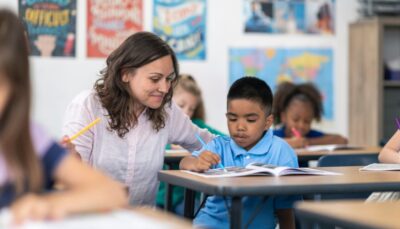 We know that not everyone learns the same way. Education professionals are adept at modifying curricula to suit a variety of learning styles and needs – Individual Education Plans (IEPs). But in a classroom with a large number and wide range of students, without an EA, teachers struggle to meet the learning needs of all their students.
We know that not everyone learns the same way. Education professionals are adept at modifying curricula to suit a variety of learning styles and needs – Individual Education Plans (IEPs). But in a classroom with a large number and wide range of students, without an EA, teachers struggle to meet the learning needs of all their students.
EAs play a vital role in understanding the unique needs of students, making their IEPs work in the classroom context, and working with teachers to modify IEPs to respond to the unique needs of a student.
But EAs work goes far beyond implementing personalized learning strategies.
Kids are small versions of adults whose brains are still developing and often haven’t yet learned how to constructively express their feelings. Kids with neurodevelopment differences may need extra help with communication, social interaction and behaviour. EAs are experts in understanding what students are communicating with their behaviour and responding to that student’s needs.
It’s easy to get frustrated when we don’t feel understood. For some kids, that frustration becomes behaviour that’s disruptive or harmful to others. EAs have the specialized training and expertise to understand behaviour, support students in communicating their needs, managing those needs, offering emotional support to help students feel confident in the classroom, and facilitating interaction with other students and encouraging friendships.
interaction with other students and encouraging friendships.
In short, EAs are the key to fostering a truly inclusive education system for all students.
In an ideal world, every student who needed one would have an education assistant assigned to them. This is not our current reality.
Instead, EAs are often assigned multiple students to support. I’ve spoken with EAs who support four or five different students in one day. They are frustrated that they can’t spend more time with students, and they see first- hand that a growing number of kids are not getting what they need to succeed in the classroom.
Kids are getting frustrated, acting out and giving up.
Without a consistent level of support, EAs just can’t keep up with the needs of the students who need them to meaningfully experience public education. And when students’ needs aren’t met, that can make the role of an EA harder to fulfill. This is leading to EAs report experiencing stress and burnout trying to do a nearly impossible job.
School Districts across B.C. often struggle to balance budgets. Cuts to support staff are often how those budgets are balanced. In spring of 2025, for example, the Surrey School District faced a $16-million-dollar deficit. Part of the District’s response was to cut fifty EA positions. This can only mean that students who rely on EAs will have less support, and EAs will be stretched even more.
 This is not a unique situation. School districts across the province need more funding to adequately staff classrooms. Many districts are struggling with recruitment of qualified EAs due to lack of hours and earning potential. As school districts make more cuts to balance budgets, the crucial work of EAs will become more unsuitable – EAs will suffer more burn out and leave the profession, and kid will have less support.
This is not a unique situation. School districts across the province need more funding to adequately staff classrooms. Many districts are struggling with recruitment of qualified EAs due to lack of hours and earning potential. As school districts make more cuts to balance budgets, the crucial work of EAs will become more unsuitable – EAs will suffer more burn out and leave the profession, and kid will have less support.
If B.C. is truly committed to inclusive public education, we need to make immediate and long-term investments. School operating grants as a percentage of the province’s GDP have decreased significantly since 1981.
We can do better for our kids.
Ensuring every student has the resources they need to succeed is an investment in stronger families, stronger communities and a better province. Most importantly, increased education public education spending is an investment in our kids – all our kids.
Kirsten Daub is member of the IPE/Board of Directors, the K-12 Sector Coordinator for the Canadian Union of Public Employees in British Columbia (CUPE BC Region) and a CUPE National Servicing Representative. Previously, Kirsten worked for over ten years for CoDevelopment Canada building international solidarity between unions and social justice organizations in Canada and Latin America.
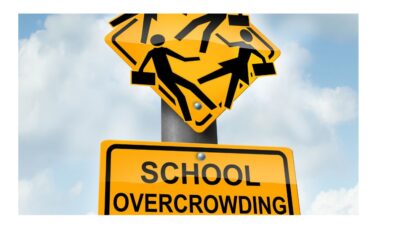 Surrey’s serious overcrowding issues span the district and all grade levels. It’s alarming that, in a number of cases, enrolment in their neighbourhood school has been cut off to neighbourhood children and youth. When the enrollment cut off hit the news two years ago, the response of the then Minister was to let parents/caregivers know that they would be able to find a school somewhere else in the district in which to enrol their children.
Surrey’s serious overcrowding issues span the district and all grade levels. It’s alarming that, in a number of cases, enrolment in their neighbourhood school has been cut off to neighbourhood children and youth. When the enrollment cut off hit the news two years ago, the response of the then Minister was to let parents/caregivers know that they would be able to find a school somewhere else in the district in which to enrol their children. We are not opposed to innovation- far from it! There have been countless educational decisions and innovations based on new understandings about how young people learn, how to support different learning styles and needs, and what values schools should reflect, to name just a few important drivers. Without the continual re-examination of teaching and learning, public schools would have been stuck in a time warp. However, we also have to think about the context for changes- while the expectations on schools have increased, the funding and support has declined. This is simply not sustainable, regardless of how much and how often the delivery model is changed.
We are not opposed to innovation- far from it! There have been countless educational decisions and innovations based on new understandings about how young people learn, how to support different learning styles and needs, and what values schools should reflect, to name just a few important drivers. Without the continual re-examination of teaching and learning, public schools would have been stuck in a time warp. However, we also have to think about the context for changes- while the expectations on schools have increased, the funding and support has declined. This is simply not sustainable, regardless of how much and how often the delivery model is changed. reported in studies vary and include isolation, social media and excessive time spent online, financial precarity and inequality, inadequate sleep levels, anxiety about climate change and other prevailing planetary issues, breakdown of community, and lack of supportive relationships.
reported in studies vary and include isolation, social media and excessive time spent online, financial precarity and inequality, inadequate sleep levels, anxiety about climate change and other prevailing planetary issues, breakdown of community, and lack of supportive relationships.  need to learn how to cope in the “real world”, the speaker is inevitably projecting their biases and their vision of the real world, as if that vision was a universal truth, unalterable and the only choice. We have to step back and ask ourselves if today’s manifestation of a “real world” is something we want young people to replicate. Surely, we who have left monumental social issues, raging inequality, and the planet’s very survival to the real world to the next generations to solve should not be the one to declare what the real world for the next generation should be.
need to learn how to cope in the “real world”, the speaker is inevitably projecting their biases and their vision of the real world, as if that vision was a universal truth, unalterable and the only choice. We have to step back and ask ourselves if today’s manifestation of a “real world” is something we want young people to replicate. Surely, we who have left monumental social issues, raging inequality, and the planet’s very survival to the real world to the next generations to solve should not be the one to declare what the real world for the next generation should be. Within weeks, he stopped entering the classroom. They called us daily, threatening to call 911 if we didn’t come quickly enough.
Within weeks, he stopped entering the classroom. They called us daily, threatening to call 911 if we didn’t come quickly enough. stretched thin. Children without formal diagnoses fall through the cracks. Parents fight for years to get their children diagnosed and then are told there are no resources to support them. Families feel like they are trapped in a cycle of bait and switch while our children are circling the drain.
stretched thin. Children without formal diagnoses fall through the cracks. Parents fight for years to get their children diagnosed and then are told there are no resources to support them. Families feel like they are trapped in a cycle of bait and switch while our children are circling the drain. School exclusion is a pipeline. It begins the moment a child is made to feel that their presence is conditional—that they are too much. And it compounds: in anxiety, in early police contact, in fractured families, in long-term reliance on disability supports.
School exclusion is a pipeline. It begins the moment a child is made to feel that their presence is conditional—that they are too much. And it compounds: in anxiety, in early police contact, in fractured families, in long-term reliance on disability supports.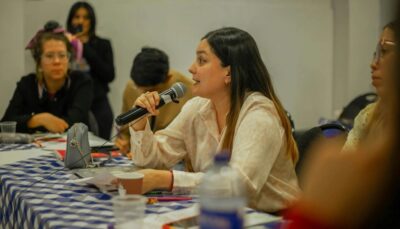 Parents/caregivers, support staff, teachers, trustees, advocacy organizations, and, in a number of cases, young people themselves are speaking out. They know well the impact of underfunding on student learning and well-being, and on the school community as a whole. They’ve been imploring the government to address the shortfalls, reverse the losses, and make public education a high priority. Their perspectives should be welcomed and respected.
Parents/caregivers, support staff, teachers, trustees, advocacy organizations, and, in a number of cases, young people themselves are speaking out. They know well the impact of underfunding on student learning and well-being, and on the school community as a whole. They’ve been imploring the government to address the shortfalls, reverse the losses, and make public education a high priority. Their perspectives should be welcomed and respected. given or be subject to dismissal. It’s the provincial government dictates the size of the pie, regardless of whether it’s adequate, and boards are simply left to slice it up. We can safely conclude that no district would even consider cutbacks if the funding matched the costs.
given or be subject to dismissal. It’s the provincial government dictates the size of the pie, regardless of whether it’s adequate, and boards are simply left to slice it up. We can safely conclude that no district would even consider cutbacks if the funding matched the costs. same services as the year before. It’s very likely that the dollars allocated to most, if not all government services, are the “highest ever.” But, in terms of per pupil spending in education, BC does not have a record to crow about. According to Stats Can updated figures for the year 2022 (latest available) BC ranked fourth from the bottom of the provinces and territories in dollars per pupil dedicated to public education.
same services as the year before. It’s very likely that the dollars allocated to most, if not all government services, are the “highest ever.” But, in terms of per pupil spending in education, BC does not have a record to crow about. According to Stats Can updated figures for the year 2022 (latest available) BC ranked fourth from the bottom of the provinces and territories in dollars per pupil dedicated to public education. 
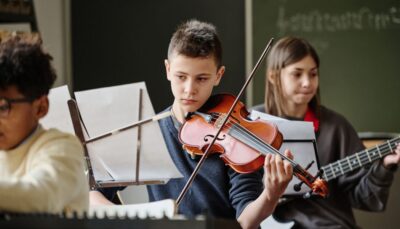 Music education allows students to access and express emotions that they may not otherwise have words or actions for. It helps them to manage their emotions. It also helps students to feel and to understand others’ emotions. When students play in an ensemble, they learn to listen – not simply hear – and they learn to wait for their turn. They learn to support others, and to create and enjoy the harmony that is realized in teamwork. These are life skills that make such students a better friend, partner, co-worker, and citizen. Music education has been shown to teach students to navigate social interactions and resolve conflicts in a positive way, to be more self-aware, and to be more empathetic. They read social cues and thrive.
Music education allows students to access and express emotions that they may not otherwise have words or actions for. It helps them to manage their emotions. It also helps students to feel and to understand others’ emotions. When students play in an ensemble, they learn to listen – not simply hear – and they learn to wait for their turn. They learn to support others, and to create and enjoy the harmony that is realized in teamwork. These are life skills that make such students a better friend, partner, co-worker, and citizen. Music education has been shown to teach students to navigate social interactions and resolve conflicts in a positive way, to be more self-aware, and to be more empathetic. They read social cues and thrive.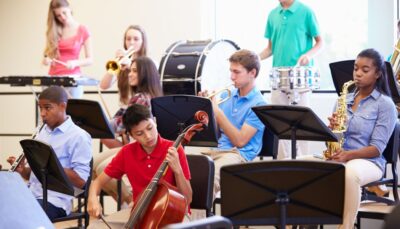 They study spirituals, protest songs and ballads that have been passed down through generations. Diverse styles such as jazz, classical, country, soul, singing, reggae, opera, folk, pop, rock, hip-hop, rhythm & blues, EDM (electronic dance music) are all part of a proper music education curriculum. These experiences show students who we are, where we have been, and who we can become. Music is a universal language; it transcends cultural and linguistic boundaries and connects us.
They study spirituals, protest songs and ballads that have been passed down through generations. Diverse styles such as jazz, classical, country, soul, singing, reggae, opera, folk, pop, rock, hip-hop, rhythm & blues, EDM (electronic dance music) are all part of a proper music education curriculum. These experiences show students who we are, where we have been, and who we can become. Music is a universal language; it transcends cultural and linguistic boundaries and connects us.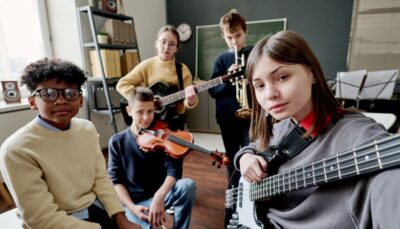 cards for – over 350 students, three times each year. I conducted five choirs, three bands and taught general Music K-grade seven. That meant three different staff meetings, innumerable parent-teacher meetings, eight festival entries and countless school concerts. My assigned ‘classrooms’ were school gyms, libraries and when lucky, portables. One school year, my meagre budget meant using fishing line to replace ukulele strings; a durable but not melodious remedy. Lunch ‘breaks’ were usually spent driving to the next school. Programs can devolve from quality to quantity; thirty minutes of music per week does not equate quality music education. Public school music education needs to be reconsidered as essential for brains, hearts, and our future, rather than a luxury or bonus that only students in private schools can access (look at a brochure for any private school and you will always see classes for stringed instruments and arts).
cards for – over 350 students, three times each year. I conducted five choirs, three bands and taught general Music K-grade seven. That meant three different staff meetings, innumerable parent-teacher meetings, eight festival entries and countless school concerts. My assigned ‘classrooms’ were school gyms, libraries and when lucky, portables. One school year, my meagre budget meant using fishing line to replace ukulele strings; a durable but not melodious remedy. Lunch ‘breaks’ were usually spent driving to the next school. Programs can devolve from quality to quantity; thirty minutes of music per week does not equate quality music education. Public school music education needs to be reconsidered as essential for brains, hearts, and our future, rather than a luxury or bonus that only students in private schools can access (look at a brochure for any private school and you will always see classes for stringed instruments and arts). The Ministry of Education and Child Care’s policy manual for the provision of inclusive education services outlines a “continuous and flexible” process for identifying students with disabilities and diverse needs and then providing the necessary supports.
The Ministry of Education and Child Care’s policy manual for the provision of inclusive education services outlines a “continuous and flexible” process for identifying students with disabilities and diverse needs and then providing the necessary supports. least the past 17 years. In 2023-24, for example, provincial government funding only covered 72.3% of what BC school districts spent to provide inclusive education services. In dollar terms, this was a $340 million dollar funding shortfall that districts were forced to cover with their core operational funding. Besides creating pressure for districts to redirect funding from other operational areas, the lack of funding forces districts to ration inclusive education staff and services. Research with teachers has found that this can be seen as having to “triage the system,” including trying to fit in supports through creative scheduling, shifting support intended for one student to multiple students, and cobbling multiple small supports together.
least the past 17 years. In 2023-24, for example, provincial government funding only covered 72.3% of what BC school districts spent to provide inclusive education services. In dollar terms, this was a $340 million dollar funding shortfall that districts were forced to cover with their core operational funding. Besides creating pressure for districts to redirect funding from other operational areas, the lack of funding forces districts to ration inclusive education staff and services. Research with teachers has found that this can be seen as having to “triage the system,” including trying to fit in supports through creative scheduling, shifting support intended for one student to multiple students, and cobbling multiple small supports together. Increased funding alone will not “fix” inclusive education. However, it is the necessary condition for moving BC along the path of more inclusive school communities.
Increased funding alone will not “fix” inclusive education. However, it is the necessary condition for moving BC along the path of more inclusive school communities. This isn’t to say that excessive cell phone use or social media isn’t negatively impacting youth; rather, it suggests that banning phones in schools isn’t the solution politicians often claim it to be.
This isn’t to say that excessive cell phone use or social media isn’t negatively impacting youth; rather, it suggests that banning phones in schools isn’t the solution politicians often claim it to be. shortchanging them by opting for simplistic (and often hard-to-enforce) bans instead of more comprehensive, nuanced approaches? Wouldn’t it be better to help them develop healthy tech habits and the ability to set boundaries for themselves, enabling them to use technology constructively?
shortchanging them by opting for simplistic (and often hard-to-enforce) bans instead of more comprehensive, nuanced approaches? Wouldn’t it be better to help them develop healthy tech habits and the ability to set boundaries for themselves, enabling them to use technology constructively?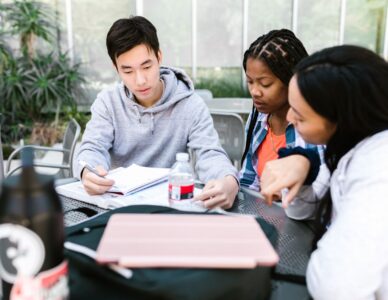 phone use. Schools and the education system are well-positioned to play a central role in this, but it will take much more than the “headline-grabbing gimmicks” of cellphone bans.
phone use. Schools and the education system are well-positioned to play a central role in this, but it will take much more than the “headline-grabbing gimmicks” of cellphone bans. their children with disabilities and/or diverse needs. These parents and many others know it’s a system under stress; they and their children regularly and directly experience the impact of teacher and support staff shortages and chronic underfunding. They also know how difficult it is to access the education decision-makers and be heard. And they speak to the fact that placing students with disabilities and/or diverse needs in classrooms without the necessary supports or, as is sometimes the case, in segregated classrooms, serves to stigmatize their children and seriously undermines their ability to succeed.
their children with disabilities and/or diverse needs. These parents and many others know it’s a system under stress; they and their children regularly and directly experience the impact of teacher and support staff shortages and chronic underfunding. They also know how difficult it is to access the education decision-makers and be heard. And they speak to the fact that placing students with disabilities and/or diverse needs in classrooms without the necessary supports or, as is sometimes the case, in segregated classrooms, serves to stigmatize their children and seriously undermines their ability to succeed.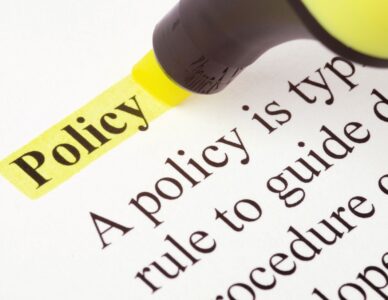 Looking back, inclusion first became a government initiative in the 1980s. The Royal Commission on Education report in 1988 and subsequent education School Act revisions mandated the closing of segregated schools and established the requirement that neighbourhood schools were to provide for the success of all children. There was the expectation of significant positive change and, for a time, there were meaningful steps in that direction. But, years of underfunding and the lack of adequate staffing and supports has us seeing inadequate supports as the “norm” and exclusionary practices coming back- reduced time at school, exclusion from certain activities, and, in some cases, even segregated programs and classes.
Looking back, inclusion first became a government initiative in the 1980s. The Royal Commission on Education report in 1988 and subsequent education School Act revisions mandated the closing of segregated schools and established the requirement that neighbourhood schools were to provide for the success of all children. There was the expectation of significant positive change and, for a time, there were meaningful steps in that direction. But, years of underfunding and the lack of adequate staffing and supports has us seeing inadequate supports as the “norm” and exclusionary practices coming back- reduced time at school, exclusion from certain activities, and, in some cases, even segregated programs and classes.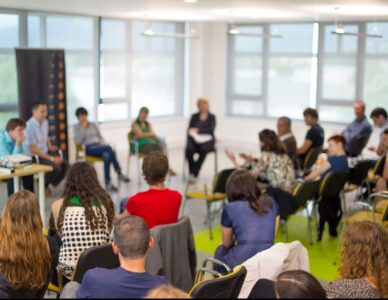 We’d add one more step. We’d encourage everyone to call on each school district and the Ministry of Education and Child Care to hold similar forums with parents/caregivers, support staff, educators and students to learn from their experiences and recommit to fully supported inclusion in all of our public schools.
We’d add one more step. We’d encourage everyone to call on each school district and the Ministry of Education and Child Care to hold similar forums with parents/caregivers, support staff, educators and students to learn from their experiences and recommit to fully supported inclusion in all of our public schools. In schools, staff work diligently to ensure that programs are effective. Measurable goals are created, data is gathered, and results are reviewed regularly. Reports regarding student progress are generated at prescribed intervals. These reports are shared with parents and relevant school staff, covering everything from classroom achievements to individualized programs such as speech-language therapy. The information is securely, confidentially stored for future reference as needed. The rationale behind this process is clear: if we do not measure our efforts, we cannot determine whether our interventions are truly making a difference.
In schools, staff work diligently to ensure that programs are effective. Measurable goals are created, data is gathered, and results are reviewed regularly. Reports regarding student progress are generated at prescribed intervals. These reports are shared with parents and relevant school staff, covering everything from classroom achievements to individualized programs such as speech-language therapy. The information is securely, confidentially stored for future reference as needed. The rationale behind this process is clear: if we do not measure our efforts, we cannot determine whether our interventions are truly making a difference. Schools operate with a great deal of transparency. Classroom teachers provide daily plans that are utilized by themselves or a teacher-on-call. Support staff, such as English Language Learning teachers and contracted specialists like occupational therapists, follow universal referral systems, administer standardized assessments, document observations and provide reports . Caseload information is readily available to school administrators, and priorities are confidentially discussed during school-based team meetings.
Schools operate with a great deal of transparency. Classroom teachers provide daily plans that are utilized by themselves or a teacher-on-call. Support staff, such as English Language Learning teachers and contracted specialists like occupational therapists, follow universal referral systems, administer standardized assessments, document observations and provide reports . Caseload information is readily available to school administrators, and priorities are confidentially discussed during school-based team meetings. As schools work hard to maintain a safe and supportive environment for students, the question remains: Does the presence of School Police Liaison Officers truly contribute to the safety of our schools, or is it simply an unproven assumption? Without clear data and transparent reporting on the program’s effectiveness, it’s difficult to justify its widespread adoption. Perhaps it’s time for a deeper, more data-driven conversation about how best to ensure the safety and well-being of students without relying on programs that lack measurable evidence of success. It’s crucial that we continue to explore alternative solutions that prioritize student welfare while addressing the complexities of modern school safety.
As schools work hard to maintain a safe and supportive environment for students, the question remains: Does the presence of School Police Liaison Officers truly contribute to the safety of our schools, or is it simply an unproven assumption? Without clear data and transparent reporting on the program’s effectiveness, it’s difficult to justify its widespread adoption. Perhaps it’s time for a deeper, more data-driven conversation about how best to ensure the safety and well-being of students without relying on programs that lack measurable evidence of success. It’s crucial that we continue to explore alternative solutions that prioritize student welfare while addressing the complexities of modern school safety.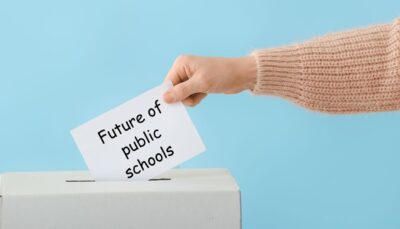 election issue, this particular race was dominated by harmful and hateful rhetoric that sought to control and further privatize education. This included:
election issue, this particular race was dominated by harmful and hateful rhetoric that sought to control and further privatize education. This included: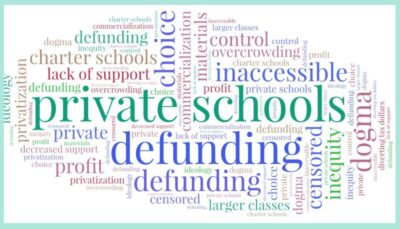 support for the Conservatives in many parts of the province. Their ideas for education are reflected in the ongoing advocacy of right-wing Think Tanks, such as the Fraser Institute, that champion education reforms “to achieve better value for money and improved results for both students and taxpayers.”
support for the Conservatives in many parts of the province. Their ideas for education are reflected in the ongoing advocacy of right-wing Think Tanks, such as the Fraser Institute, that champion education reforms “to achieve better value for money and improved results for both students and taxpayers.” As illustrated in the case of the BC election, these conservative political parties are linked to the rise of the “parental rights” movement in Canada – a movement that embodies the many links between far-right ideologies and interest in education privatization. In BC, for example, the attacks have been focused on a program called SOGI 123, which supports teachers to make schools safer and more inclusive for students of all sexual orientations and gender identities. Contrary to the arguments of the new Rights, research illustrates the positive impact of this program. A recent evaluation of SOGI 123, done by researchers at the University of British Columbia, found that the program decreased bullying and sexual orientation discrimination for both LGBT+ and also for heterosexual students.
As illustrated in the case of the BC election, these conservative political parties are linked to the rise of the “parental rights” movement in Canada – a movement that embodies the many links between far-right ideologies and interest in education privatization. In BC, for example, the attacks have been focused on a program called SOGI 123, which supports teachers to make schools safer and more inclusive for students of all sexual orientations and gender identities. Contrary to the arguments of the new Rights, research illustrates the positive impact of this program. A recent evaluation of SOGI 123, done by researchers at the University of British Columbia, found that the program decreased bullying and sexual orientation discrimination for both LGBT+ and also for heterosexual students.